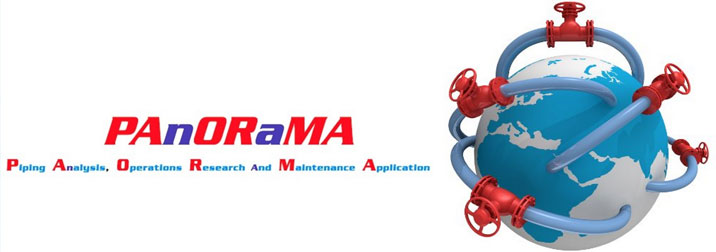- Simulation (Gas/Liquid Networks)
- Design (Pipe Sizing, Pump/Compressor Rating, Instrument Rating and Location)
- Water Hammer and Surge Analysis
- What-if Analysis
- Simulation Support for Forecasting and Scheduling
- Network Expansion (Incremental)
- Commerce (Shrinkage, Line Pack Calculations, Billing)
- Operator Training and Retraining
- SCADA Functions (Trending, Report Generation)
- Leak Detection
What-if Analysis
Once a simulation is created, what-if analysis can be tried by creating scenarios by changing inputs to the simulation. For example:
1. What will happen if a valve delivering the fluid to an end user suddenly closes due to any reason? Such a scenario will cause substantial rise in pressure at the upstream end of the valve being closed. If the pipe/network is delivering a liquid, this rise in pressure is called water hammer effect and can take the pressure beyond what the pipe was designed for. PAnORaMA will quantify the extent of water hammer effect and the time it will take for the network to reach a safe steady state after this disturbance.
2. What will happen if a pump shuts down suddenly due to some reason such as power failure? It can cause low pressure areas on the discharge side of the pump and even vacuum creation. The pipe can implode in such a case unless protected against such eventuality by a vacuum relief valve etc. Full quantification of the effect of pump failure can be done through simulations.
3. What happens if user draws more or less than his allotted flow rate? It will affect the entire network operation and some users may not get the fluid at the flow rate and pressure they want or the entry pressure of the fluid into the network may have to be suitably adjusted.
4. What will happen if a new user is introduced onto the network at a certain location? Can he be accommodated without the existing users suffering in terms of the specifications (flow rate, pressure) at which they have been promised the supplies? This will involve using the simulation by introducing this user in the network simulation and actually finding what will happen.
For any network operator, there are these and many more scenarios which need to be studied quantitatively before a decision can be taken. PAnORaMA versions support all these tasks.

